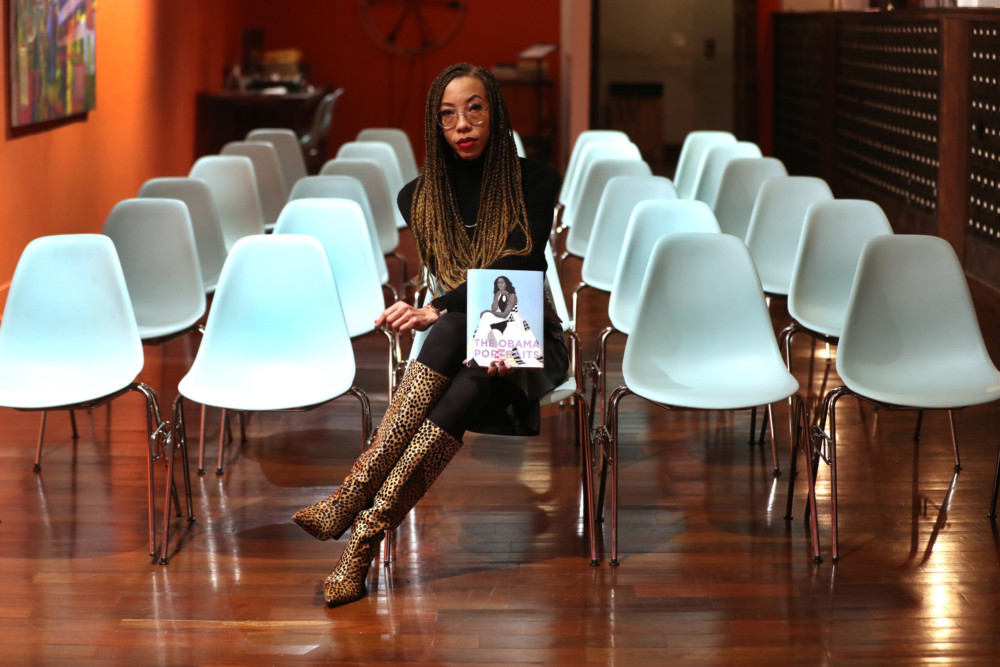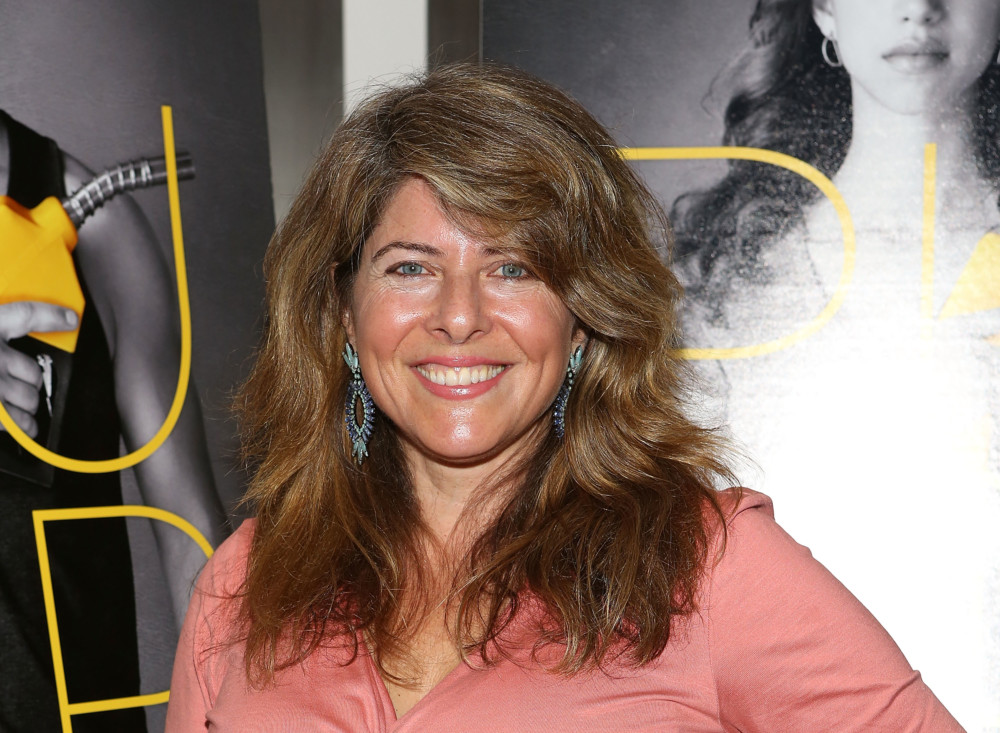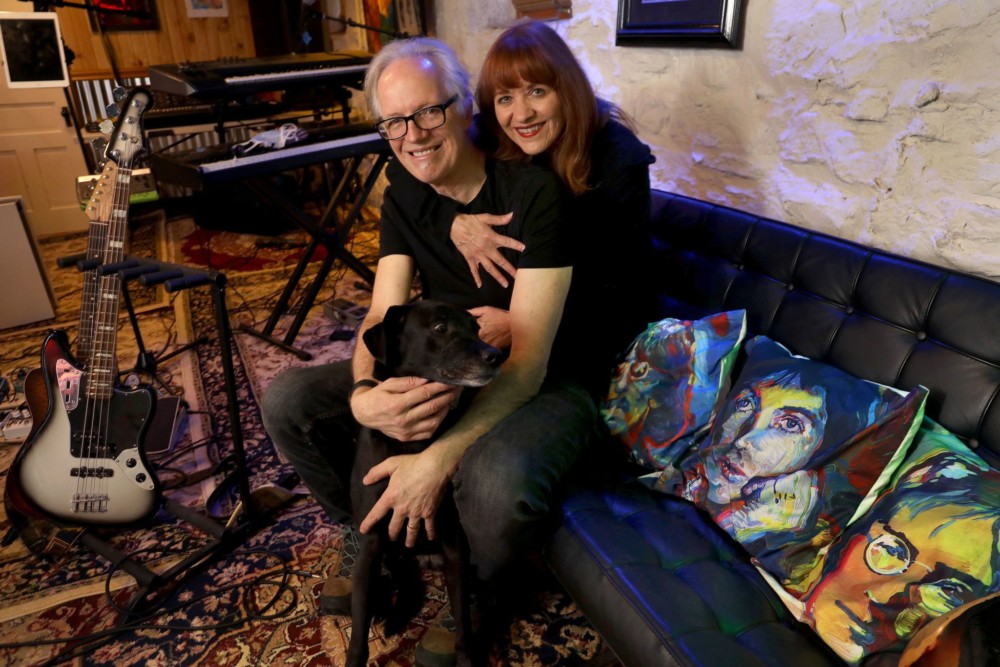By Steve Johnson
Chicago Tribune
WWR Article Summary (tl;dr) Artist Amy Sherald has heard the complaints and she is not budging. Adding, “Some people like their poetry to rhyme. Some people don’t,” was her most succinct summary. “That’s fine. It’s cool.”
CHICAGO
Amy Sherald has heard the complaints about her official portrait of former First Lady Michelle Obama.
‘Why is she gray?’ ‘It doesn’t look like her.’ They came up again as the artist appeared in a public forum recently at Chicago’s Stony Island Arts Bank. At the sold-out event to unveil the new book “The Obama Portraits,” one of her questioners even brought up the instant, sharp reaction of Black Twitter, which, like most Twitter demographics, is not shy in its judgments.
“I feel like anything that comes along with something that’s very public is going to bring along some criticism,” Sherald told people at the old bank that Chicago artist Theaster Gates has turned into a kind of community art clubhouse. “So I was ready for it. I thought I was ready for it. But after 48 hours…. I was like, ‘People are crazy.'”
She has heard the complaints and she is not budging.
“Some people like their poetry to rhyme. Some people don’t,” was her most succinct summary. “That’s fine. It’s cool.”
Still, she “saw a lot of opportunity” in the reaction, she said. “When I had time to respond to the emails, a lot of the people just had not engaged with art at all. And they’re like, ‘You have a First Lady who is a black woman, and she should have black skin.’ To me when you see brown skin, it tends to codify something. So through the gray you’re almost allowed to look past that into the real person.”
Then, too, there is the live impact of the painting, monumental at 6 feet tall by 5 feet wide, versus a little snapshot of it seen on a screen. The cool colors warm up, as does the subject itself, famous for her ability to project vivacity in public settings. At the same time there is a guardedness in her face, a sense of the private person she has been holding back, of the work it has taken to be a Beloved First Lady.
And then, against a wall that appears beige, as in the famous photograph of Parker Curry, the young African-American girl staring up at the portrait as a museum guard watches, Obama’s skin, those famously toned arms, do begin to take on shades of brown, at least from a certain angle.
“A lot of people were like, ‘I didn’t like it and then went to go see it.’ And they wrote me back to say, ‘It made me cry,'” Sherald told the South Side crowd. “Because it has a visual effect that it does not carry on Instagram.”
Sherald also knows that the criticism is just one subset of the reaction. She has also gone into the room where it hangs at the Smithsonian’s National Portrait Gallery in Washington, D.C., seen the enthusiasm for hers and Kehinde Wiley’s portrait of President Barack Obama, still, some two years after they were unveiled. They have roughly doubled attendance at the museum, according to NPG officials.
“It’s become something that’s almost really sacred,” she said in an interview before the public forum. “I’ve kind of invisibly hung out there while people were looking. It’s almost like when you walk into one of those spaces where you’re like”, she moves to a whisper, “‘I’m whispering, but I’m not sure why I’m whispering.’ But you kind of feel like you should, like you’ve entered into a different space.”
She was talking not only about the continued warm reception for the works but for her hopes when they begin their recently announced and first-ever tour, which, like the launching of the Smithsonian book, will begin in Chicago, the city that started the Obamas’ political career, at the Art Institute in June, 2021.
“As long as it continues to hold its historical value and weight, I think it’s a great idea,” she said of the tour.
Asked if going to see the public reacting to the paintings was like a filmmaker slipping into the back row at one of her movies, Sherald said, “I mean, I would have to be there for other stuff, but I would just kind of go up and stand around because, I don’t know, I’m nosy. But it was nice to see people really enjoy it and hear what they were saying sometimes.”
Those paintings, it is fair to say, are the most famous and far-reaching contemporary art works made in America this century.
And they exist, Duke University art history professor and South Side native Richard Powell told the Stony Island crowd, because their subjects had the courage to go for something beyond standard presidential portraiture.
They chose Wiley, already well known for his aggrandizing portraits of pop culture figures, and Sherald, growing in art-world stature for her incisive, cool-toned portraits of every day African Americans, because they wanted more than just likenesses of themselves, said Powell, whose essay in the book attempts to place the paintings in art history.
Wiley’s Barack Obama, of course, is immediately warmer, seated, looking presidential, in a suit but not a tie, but, surprisingly, amid, almost one with, a fore- and background of ivy decorated with flowers representing his biography.
“It speaks volumes that President Obama and First Lady Michelle Obama chose Kehinde and Amy,” Powell said, “because what it says it that not only did they want really, really accomplished portraits, but they also wanted important works of contemporary art.”
Among the stuffed shirt looks at American leaders in the National Portrait Gallery, arguably only the Chuck Close take on President Bill Clinton stands out in the same way as art, speaks to the same impulse. But Clinton, of course, is not the same history-making figure.
Powell thanks the rise of the ubiquitous phone-based camera for some of the resonance the Obama portraits have had. “I think perhaps it’s the popularity of photography that has made these paintings special and extraordinary in many people’s eyes,” he said in a subsequent interview.
“Unlike a very, very flat, shiny photograph, with something on canvas you can see the paint, and sometimes it’s high gloss and sometimes it’s matte, and sometimes you can see the brushstrokes, and the sheer scale and the framing devices, the painters’ compositions, all of that I think really captured people’s imaginations, along with the mystique of President Obama and First Lady Michelle Obama.”
Among the art historical essays and the many, many images, the book details Sherald’s first meetings with the Obamas, as recounted by Michelle Obama in a transcript of the unveiling ceremony.
“I had seen her work, and I was blown away by the boldness of her colors and the uniqueness of her subject matter,” Mrs. Obama said at that NPG event in February of 2018. “She walked in and she was fly and poised, and I just wanted to stare at her for a minute…
“And within the first few minutes of our conversation, I knew she was the one for me. And maybe it was the moment she came in and she looked at Barack and she said, ‘Well, Mr. President, I’m really excited to be here, and I know I’m being considered for both portraits,’ she said, ‘but, Mrs. Obama’, she physically turned to me and she said, ‘I’m really hoping you and I can work together.’
“And after that, she and I, we started talking, and Barack kind of faded into the woodwork.”
Obama empathized too with the heat the portraits would bring, even in the moment that they were being made public. “To paint a portrait of Michelle and Barack Obama is like cooking Thanksgiving dinner for strangers.
Everybody has an idea of what Thanksgiving dinner is supposed to taste like,” the former First Lady said. “(Sherald) has handled it all with remarkable poise and grace, which I think tells you a lot about who she is.”
Hearing Sherald, now 48, describe her life since Michelle Obama is like hearing about an unending walk on a treadmill, one that involves making new paintings and speeches and school appearances and dealing with a new level of celebrity. She was based for most of her career in Baltimore, but has since relocated to New York City and has left the Chicago-based Monique Meloche Gallery for Hauser & Wirth, described in Artnet News as a “megagallery.”
“I haven’t had a lot of downtime to really digest it,” she said. “You’re kind of thrown back into what you were doing already, which is already overwhelming, in addition to the new life that came along with that. It’s been about meeting commitments and making myself available to, mostly, educators and other people that didn’t know who I was prior to the unveiling of the portraits, showing up for schools and things like that.”
She called it “a blur, a positive blur,” but said she remains thrilled with the painting’s reception.
“It was really exhilarating,” she said, ” and the continued excitement around it really speaks to the power of portraiture. I feel like all of art history is a moment for portraiture, and then there was the break for abstract expressionists. And for me as a black artist, portraiture is important because there’s been a lot of art history without representation of the black figure.”
In bringing one of the planet’s most famous black figures into the museum, Sherald said, “I wanted to produce something that was really about the interior versus the exterior… something that alluded to the nuances of who she really is versus who she has to be, right?
“It was really important for me just to take pause and there kind of bubble up a little mystery around her and around the portrait. Something that would draw you in, but for different reasons. Not because she was smiling or because she, I don’t know, had on a beautiful outfit, but just because her eyes were speaking to your soul. I know it sounds corny, but…”
She trailed off and then answered, yet again, a question about the painting possibly being misunderstood. “The conversations that were being had around art and around painting among people who had never even really probably considered going to a museum, I found that to be really exciting,” she said. “So if there was misunderstanding, then I think that, for me, signifies that the work is a good work.”
You wouldn’t necessarily want to make something that’s universally loved?
“No,” she said. “No, that would be Mickey Mouse.”
___
Distributed by Tribune Content Agency, LLC.

















































































































































































































































































































































































